21 Oct 4 Risk Response Strategies for Project Management Success
4 Risk Response Strategies for Project Management Success
“You knew the job was dangerous when you took it.”
— Ice Cube, Rapper
Okay, so marketing project management isn’t the same as surviving the mean streets of South Central L.A., but all jobs come with risk… including yours! How you deal with those risks can make or break your projects and your business.
In this blog post, we’re going to zero in on the four commonly acknowledged risk response strategies, which are part of any well-developed risk management plan.
Once you’ve identified risks to your project’s success and assessed their likelihood of occurring (along with their potential impact), it’s time to decide on a risk response strategy for each. How you decide to deal with each risk requires you to answer questions about the level of risk you’re willing to accept, the potential impact of each risk, and the options available to you.
To answer these questions, you have to place each risk into one of four risk response categories:
We’ll discuss each risk response strategy in detail and provide examples for each.
Avoid
Avoiding a risk means to completely eliminate it. Not all risks can be eliminated, and some can only be eliminated at great cost, so you’ll want to analyze the costs and benefits of eliminating a given risk. Only then can you decide whether it’s worth the time, money, and effort.
Example: An electronics manufacturer is slated to use a new, cheaper supplier for a key component of a product they sell. Since the new, overseas provider is untested, there’s some concern that they might not provide the shipment on time, which could cause the company to lose this new account. This is a risk, and that risk can be essentially eliminated by using the old (more expensive) supplier to meet the initial deadline, reserving the cheaper supplier for future deadlines.
Is it worth the price? This is something the project team would have to discuss with managers and/or executive sponsors, weighing the level of risk they’re willing to accept. They might determine that going with the old supplier would destroy their profit margins since the new customer is a retail giant that negotiated dirt-cheap prices. In that case, switching to the new supplier and transferring, mitigating, or accepting the risk appears to be the best option (unless the manufacturer is willing to take a loss on the initial shipment).
Transfer
Transferring risk involves shifting the risk to some other entity, such as an insurance company. We do this all the time when we pay insurance premiums—paying a small amount each month and collectively absorbing risk for the unlucky few who need to file a claim. In all likelihood, you won’t need to use your insurance in any given year. However, if a costly accident does occur, that accident won’t bankrupt you.
Example: At the start of the Great Depression of the 1920s, Americans rushed the banks to withdraw their life savings because they knew their financial institutions were about to collapse. Since the banks didn’t have any kind of risk transference in place, only a handful of their customers could withdraw their money before the banks ran out of capital.
Today, all respected U.S. banks are members of the Federal Deposit Insurance Corporation (FDIC), which insures each account up to $250,000. This transfer of risk allows customers to trust banks. In turn, that trust allows banks to earn people’s business and prosper.
The banks pay to be members of the FDIC. By doing so they transfer the risk of losing their clients’ money to the FDIC, which is strong enough financially to avoid a repeat of 1929. If they didn’t do that, nobody would trust banks and their entire business model would fail.
Mitigate
The most common strategy for handling risk is to reduce that risk to an acceptable level. Since completely eliminating risk is often impossible or too costly, risk-mitigation is a key strategy for most project managers.
Example: An insurance company is planning to release a new auto insurance plan in the state of California. California has strict rules surrounding compliance, and if the plan doesn’t get approved by the state’s Insurance Commissioner, it might not launch on the roll-out date. That could end up costing the company a great deal of money in all sorts of ways. For example, advertisements may be cued up and ready to run on the launch date, and pulling those ads could be costly.
To mitigate the risk of not getting government sign-off in time for the proposed roll-out date, the company might engage the services of a consulting firm that specializes in insurance compliance in the state of California (in addition to having their lawyers scrutinize the plan, of course). The company might also negotiate flexible terms with advertisers, allowing them to postpone publication dates if necessary. Both are ways to potentially mitigate risk.
Accept
After analyzing all the variables, you’ll inevitably decide to simply accept some risks. In certain cases, the potential impact may be so small that it’s negligible. In other cases, the risk may be so low that it doesn’t make sense to spend money trying to avoid or mitigate it.
Whatever the case, make sure your executive sponsors sign off on any risk acceptance. You want to make sure they know you anticipated the risks and considered strategies for avoidance, transfer, or mitigation before going down the acceptance route.
Example: Airlines frequently overbook flights with the understanding that a certain number of people will cancel their flights. With thousands of flights per month, some of those flights will inevitably end up with too many passengers on the books—at which point the airlines begin offering incentives (such as flight credits) to lure people off the plane.
If that doesn’t work, the airlines are forced to kick some people off the flight. They know this will create unhappy customers, but they’ve accepted that risk. Since they’ve embraced the risk, nobody is shocked when Karen from Milwaukie tweets about the awful experience she had on her return flight from Honolulu.
Why accept these consequences? They’ve done the math, and they know that in order to compete in a price-sensitive market, they need to pack their flights as full as possible. If they don’t fill as many seats as possible, their profits drop, and they can’t offer those low fares we all love. In short, they can’t compete without overbooking, so they’re willing to accept the occasional angry tweet in exchange for packed flights.
What’s next? Monitoring Risk.
Once you’ve identified your risk strategies, you’re ready to move forward with your project. As the project unfolds, you might discover that you underestimated certain risks and over-estimated others, so don’t be afraid to change your assessment and make adjustments as you go. That might include additional risk-reduction measures, or it might involve notifying executives and key stakeholders of risks you didn’t anticipate.
It’s okay to make mistakes. Failing to document your mistakes and learn from them, however, is a fatal flaw. Each project you implement will provide valuable data and powerful lessons, so be sure to document your findings and communicate them to your team, executive sponsors, and any other departments involved.

